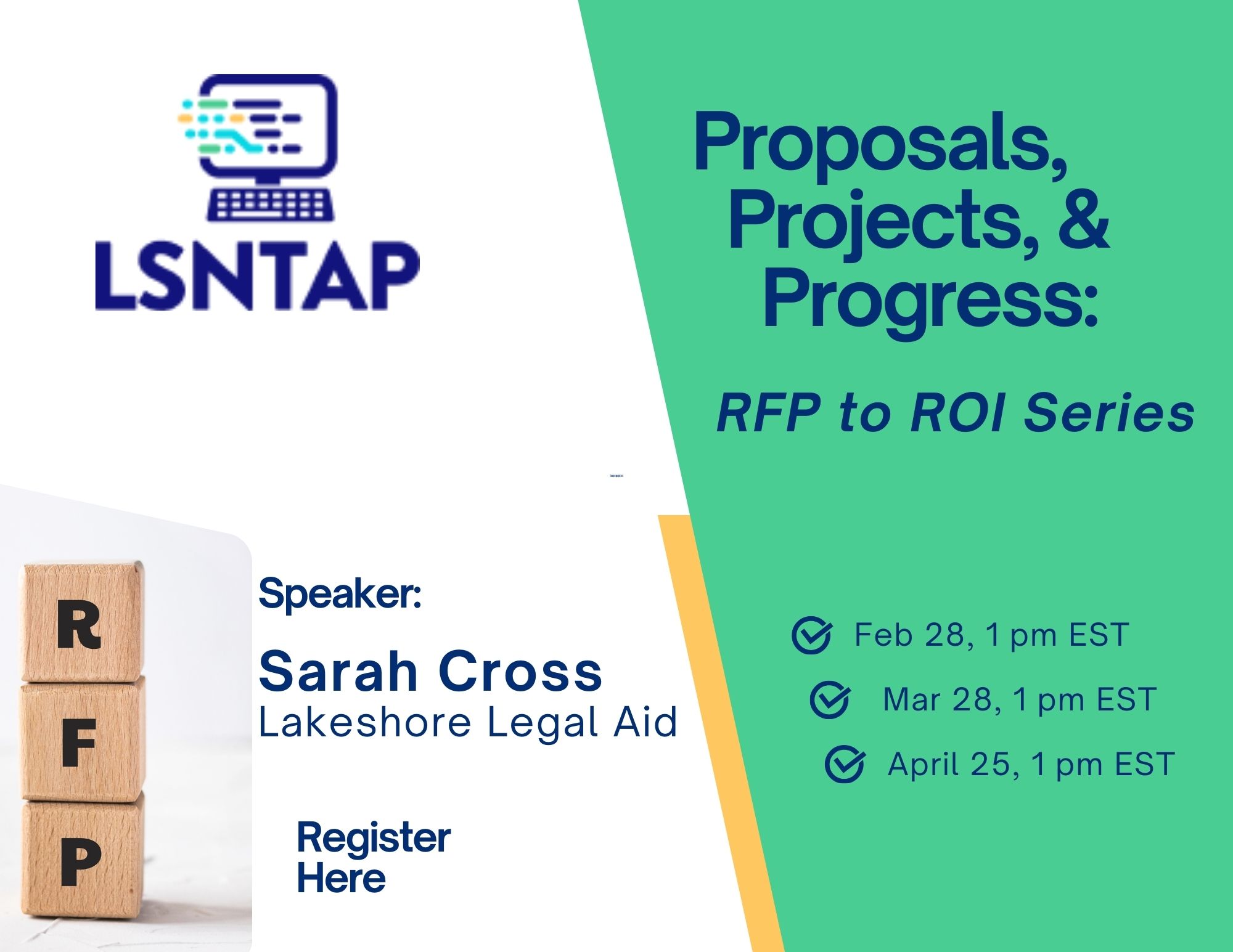Rachel Perry - Strategic Data Analytics
Scott Friday - Drupal Developer
Sart Rowe- LSNTAP
In this webinar we take a look at the Legal Aid Data Analysis Framework. This is a powerful tool for taking data and turning it useful information. We start with an introduction to data analysis and then move on to explore various parts of the website.
The Data Analysis Framework is centered around five high level questions that you would want to know in legal aid and five types of analysis. From there it explores all 25 permutations of questions and analyses along with some of the sub questions that might come up. On top of this the Framework provides a wealth of data resources and a large list of potential university research partners.
Things to Think About:
Watch for Data Patterns
Run every finding by staff
Dealing with Difficult Data
Data integrity
Factors that can skew your data
Analysis types:
Snapshot
Snapshot analyses measure counts or percentages for a given period, usually the most recently
completed year. If any counts or percentages are unexpected, comparison, trend or spatial analyses
may be necessary to better understand the reasons for the unexpected results.
Comparison
Comparison analyses review linkages between two or more variables and uncover information about
client conditions and data relationships. When unexpected data relationships are discovered,
investigation is warranted to better understand linkages and determine whether they indicate the
need for client service and advocacy work that simultaneously targets multiple conditions at once.
Trend
Trend analyses scrutinize changes over time in client conditions. Review trends over a five-year
period, or longer when possible. Spikes or dips that appear in trends might confirm what an
organization expects or raise additional questions worthy of investigation to better understand the
unexpected change and determine whether it calls for proactive steps.
Geographic Distribution
Geographic Distribution analyses show how people or problems or anything else of interest is
distributed across service areas, which can be divided into smaller areas to reveal spatial patterns.
These patterns are opportunities to learn about the spatial dimensions of your organization and your
clients.
Geographic Concentration
Geographic Concentration analyses compare geographic concentrations (high or low) of multiple
variables to determine how the variables and location impact each other.




